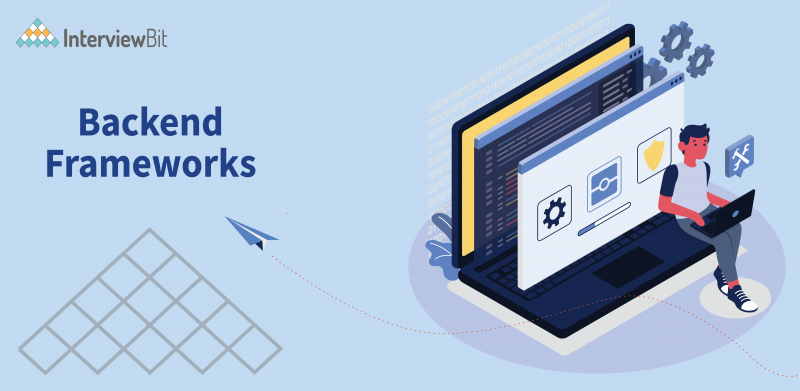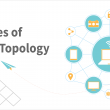- What are Backend Frameworks?
- Most Popular Backend Frameworks
- Benefits of Backend Frameworks
- Conclusions
- FAQs
- Q.1: Which Backend framework is mostly used?
- Q.2: Which Web framework is fastest?
- Q.3: Is Python used for frontend or backend?
- Q.4: What is an MVC Framework?
- Q.5: Explain the Architectural style used to create the Web API.
- Additional Resources
Frameworks have turned out to be an important aspect of web development since the standards of web applications are always evolving always, so does the intricacy of the technology required. That’s why utilizing frameworks advocated by several developers around the globe is a very practical approach for creating dynamic web applications. A web app includes a frontend (client-side), and a backend (server-side) so we will discuss the best Backend frameworks Today, the notion of digital transformation affects each organization despite their industry vertical or functional expertise. The digital presence of any organization is compelled by digital transformation since it assists to meet the rising client expectations. Digital presence indicates how an organization appears online, be it via a mobile application or website.
A few years back, the digital presence of a business was limited to a PHP web application or a static website developed on the much more famous LAMP (Linux, Apache, MySQL, and PHP) stack. But that is not the scenario anymore. With the commencement of APIs and frameworks, web development standards have grown over the years. Frameworks have now turned out to be an important aspect of web development for creating interactive and rich web applications. The libraries of server-side programming languages and backend frameworks help create the backend structure of a website. Backend frameworks offer ready-made elements for creating an intuitive web application. Utilizing frameworks offers a head-start to the programmers by negating the necessity to create and configure everything from the ground up.
What are Backend Frameworks?
The libraries of backend (server-side) programming languages, Backend frameworks facilitate the design of the backend structure of a site. They provide ready-made solutions to design an effective website or app. They offer programmers the benefit of getting rid of the need to develop and construct everything from scratch. In this manner, programmers can focus on the more prominent features they want to incorporate and immediately get things accomplished. Most backend frameworks are documented in several languages and provide distinct features. The option of language and whether a certain framework can support the features you’re trying to incorporate will determine your choice of framework. Backend web frameworks assist programmers in designing applications in a rapid and systematised way. They have easily available tools and modules that design programmers to design the fundamental architecture and flow of the application. It gets rid of the need to design and configure everything. In a nutshell, frameworks assist you in focusing on documenting your app without the need to reinvent the wheel.
Confused about your next job?
Most Popular Backend Frameworks
Backend frameworks have an important role to play in application development for endless businesses around the globe. Nevertheless, seeking the right framework for the right project can be quite difficult. Specifically, because of the multiple options that are available as the most popular backend frameworks. Let’s look at some of the top backend frameworks:
1. Flask
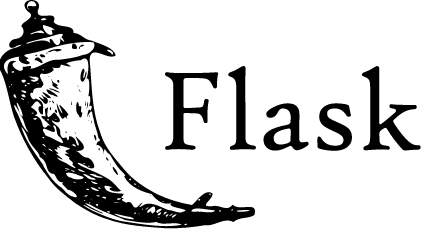
Released on: 2004
A web development framework, Flask, is developed in Python. It is simple to learn and utilise. It is “beginner-friendly” as it does not contain any boilerplate code or dependencies, which can divert from the primary function of an application. A few of the features which make Flask a perfect framework for web application development are:
- Flask offers a debugger and development server.
- It utilises Jinja2 templates.
- It complies with WSGI 1.0.
- It gives integrated support for unit testing.
- Many extensions are available for Flask, which can improve its functionalities.
Flask is regarded as a micro-framework as it is lightweight and only offers components that are necessary. It only offers components for web development, like routing, sessions, request handling, etc. For the other functionalities, like data handling, the programmers can frame a custom module or take the help of an extension. This approach negated unwanted boilerplate code, which is not even being utilised.
Pros
- Scalable – Flask’s status as a micro framework implies you can utilise it to expand a tech project, including a web app, quickly. If you wish to design an app that starts small, but shows the potential to advance rapidly and in directions you haven’t totally worked out yet, then it’s a perfect choice. Its ease of use and few dependencies permit it to function smoothly even as it keeps scaling up.
- Flexible – This is an important feature of Flask and one of its greatest benefits. To rephrase the principle of the Zen of Python, simplicity is better as compared to complexity, as it can be readily rearranged and moved around. Not only is this beneficial to allow your project to go in another direction, it also assures that the structure won’t break when a part is modified. The nominal nature of Flask and its knack for building smaller web apps implies that it’s even more flexible than Django itself.
- Simple to negotiate – At its core, Flask is easy to comprehend for web developers, not just cutting down on time and effort but also offering them more control over their code and what is plausible.
Cons
- Tough to get accustomed to a larger Flask app – As the development of a web app utilising Flask can initiate a mixture of twists and turns, a web programmer entering the project mid-way can strive to come to understand how it has been developed. The modular nature of this micro-framework can perturb the coders, who will have to familiarise themselves with every constituent part.
- Maintenance costs – Since it is so versatile regarding technology it can interface with, often an organisation utilising Flask will incur additional price of supporting those technologies. For instance, if a technology interfacing with your Flask app gets deprecated, then the company will have to rush to look for a new compatible one. The more complex the app becomes, the higher the chance of probable maintenance and implementation costs.
Famous companies that make use of the Flask Framework
- Reddit.
- Airbnb.
- Lyft.
- Mozilla.
- MIT.
- Uber.
- Netflix.
2. Django
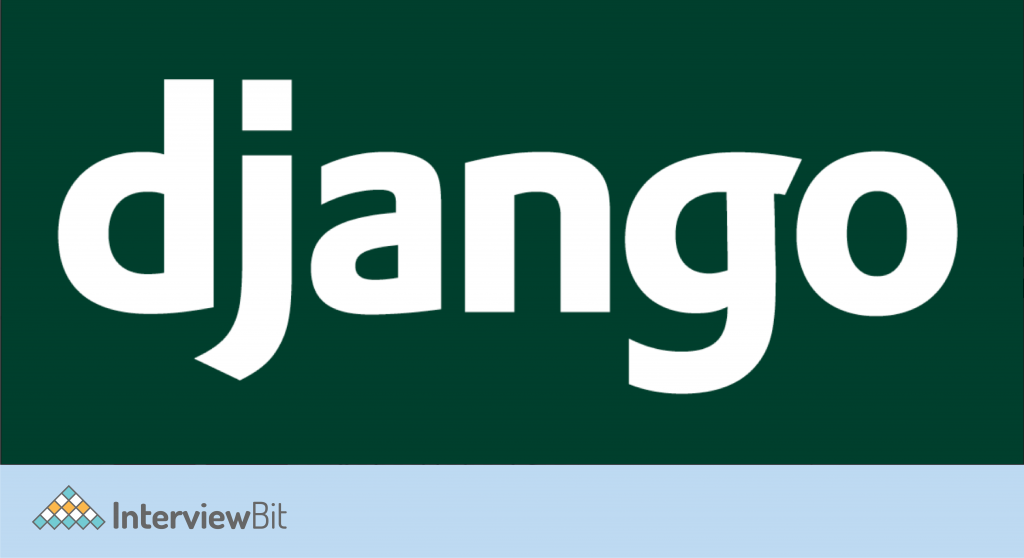
Released on: July 21, 2005
An open-source and free web application framework, Django is written in Python. It is a high-level web framework that facilitates quick development and simple, practical design. Designed by professional programmers, it looks after the hassle of web development, enabling you to focus on documenting your app without the need to reinvent the wheel.
This extensive web framework is equipped with several batteries that often during development, can be a riddle to how everything functions together. Besides the framework being large, the Django community is entirely massive. It’s so enormous and alive that there is an entire website allotted to the third-party packages people have designed to plug into Django to do many things. This ranges from authorization and authentication to full-fledged Django-powered CMS (content management systems), to integrations with Stripe, to e-commerce add-ons. To throw light on not reinventing the wheel, chances are if you want something to be executed with Django, someone has already performed it and you can simply use it in your project. Django has its naming system for all components (e.g., HTTP responses are called “views”) and functions. It also has an admin panel, which is assumed to be effortless to function with than in Yii, or Lavarel and other technical features, including:
- Simple syntax;
- Its web server;
- “Batteries included” (equipped with all the elements required to solve common cases);
- MVC (Model-View-Controller) core architecture;
- An ORM (Object Relational Mapper);
- HTTP libraries;
- A Python unit test framework.
- Middleware support
Pros
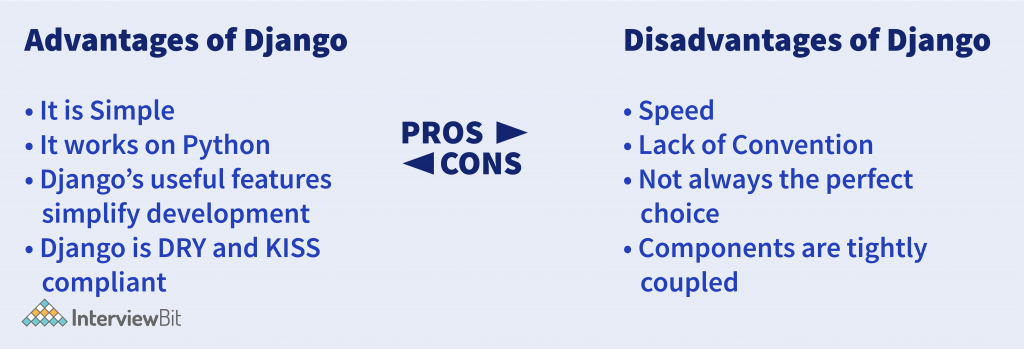
- Better CDN connectivity and Content Management: It offers better CDN connectivity due to the availability of more control over CDNs. CDNs are nothing but Content Delivery Networks Django provides libraries and developers to use it as a CMS (Content Management System) due to its great Admin Interface, which makes it rather easy to set up and run CDNs.
- Fast and scalable: Django was designed for performance, which is why this programming language has turned out to be the most popular among programmers. They can concentrate on what means the most – developing fast, scalable websites and web applications without being perturbed by laborious steps, such as setting up databases or generating models from scratch.
- Top security: Django offers several security features, which serve in avoiding cross-scripting, SQL injections, and other types of security risks to your site’s integrity. It even securely stows user passwords by default so that they do not have to bother about it anymore while visiting the website or app.
- Time-Tested: With several programmers working constantly to resolve any flaws and errors, Django has turned into one of the most utilised web frameworks in the market. One of the best benefits of using Django is time testing since most of your queries are already fixed by the hardworking team.
- Admin Interface: There are some times when organisations have to implement some modifications to their websites, but they don’t have the technical knowledge to accomplish so. To manage this situation, the admin interface is the solution. Programmers have a login-protected admin area to modify the codes.
- Significant support: The Django framework includes a dynamic and bustling community. The open-source character of the framework, coupled with its popularity for more than 16 years since its formation, is why there’s always help at hand available via different channels on its community page.
Cons
- Not good enough for minor projects: Django eases the burden by giving a lot of code that can take up server processing power. But this might not be good enough for products and projects having very few features or those that require their site to work promptly in low bandwidth conditions. It’s best suited as a preference for larger sites.
- Very demanding: Unfortunately, the sheer size of Django is also the reason that programmers encounter problems as they require knowing the plan for each feature well ahead before initiating the build. Failing to accomplish so could only result in the loss of resources and time put into restructuring.
- Lack of coding conventions: While some developers may choose the scalability provided by Django, its absence of convention can be a disappointment for others. Other frameworks like Ruby on Rails have everything you require to get started and are defined for them in the code itself, which makes it simpler and swifter than Django as there’s no boilerplate required at all.
- Monolithic framework: Django does not let programmers understand Python tools and packages. Rather, it concentrates on offering code-oriented programming. Django owns a specific set of files that you only require to learn. Programmers have already designed many models that may be reused in several projects, letting the users only utilise them instead of implementing any adjustments. Therefore, for any tech lover, there is no option of working with the existing codes. While functioning with Django you only have to concentrate on your project, instead of some complicated programming.
- Tightly coupled: Django offers all its packages and libraries altogether, which implies there is a requirement to install them in one instance. With its ORM, settings object, and Template engine system, the coupling tends to get tighter. This irritates the users.
Famous companies that make use of the Django framework
- Mozilla
- Pinterest,
- Disqus,
- Instagram,
- Spotify,
- BitBucket,
- National Geographic.
3. Ruby on Rails
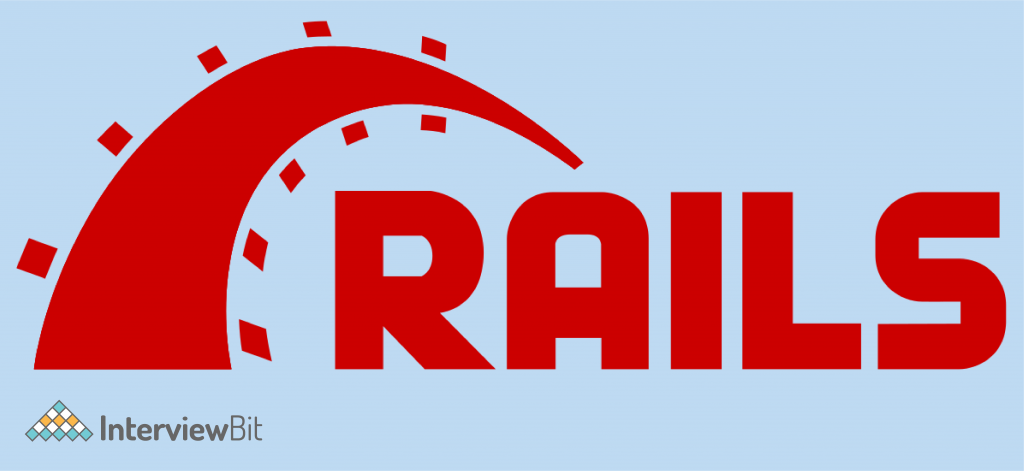
Released on: August 2004
Also known as Rails, Ruby on Rails is a server-side web application development framework that is documented in the Ruby programming language, and David Heinemeier Hansson developed it under the MIT License. It follows the MVC(model-view-controller) architecture that offers a default structure for web services, databases and web pages. Ruby on Rails also makes use of web standards, such as XML or JSON for data transfer and HTML, CSS, and JavaScript for the UI. It stresses the utilisation of different well-known software engineering paradigms and patterns and like:
- Don’t Repeat Yourself (DRY): This software development principle is used to reduce the repetition of information or codes.
- Convention Over Configuration (CoC): It offers several opinions for the best approach to accomplish several things in a web application.
Why Ruby on Rails?
- It lets you launch a quicker web application.
- Saves your money by adopting the Ruby on Rails framework.
- Assists you to maintain and avoid problems with stuff migration.
- It makes your app faster.
- You can efficiently amend our app with the latest functionality.
- It makes use of Metaprogramming methods to write programs.
Here are some of the many benefits that Ruby on Rails provides its users.
Pros
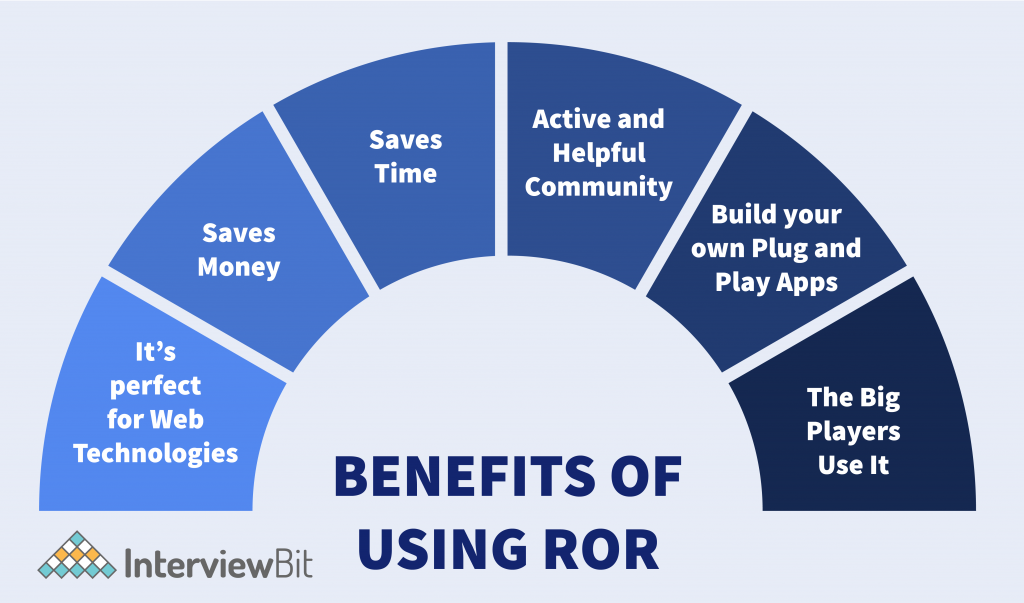
- Fast development: Rails helps developers to build high-velocity and fast applications, and prototypes. The decisive package manager architecture implies that scaffolding an application can be achieved via some basic commands. This is owing to its built-in ORM (Active record), which takes the onus of both database logic and application so you don’t have to worry about them during coding your app.
- Cost-effective: The ROR framework is a 100% free, open-source framework and works on Linux. From a programmer’s perspective, Ruby on Rails is also effortless. There are lots of gems(plugins) available, thus it can save the developer’s effort and time, which can be a significant benefit of ruby. It’s easy to set up and support the website without investing more money, assuring greater performance, quality, or scalability of your site.
- Secure: A few security measures are developed within the framework and facilitated by default. Utilising ROR also implies that adopting the secure development lifecycle may be an intricate security assurance method. The Rails community sincerely strives to spot and patch the latest vulnerabilities and the framework is well-written both unofficially and officially.
Cons
- Slow runtime: Rails is considered slower than other frameworks, but this is not the scenario always. If you don’t want to accommodate tons of requests per second, like Facebook or Twitter, then Ruby will work just fine. It’s necessary to notice that most performance issues will rise from your networking infrastructure and server architecture instead of RoR. With the appropriate infrastructure and skills, RoR can be just as rapid as other frameworks.
- Boot Speed: Another drawback of ROR is the boot speed. Because of the dependence on the sheer number of gem dependencies and files, it takes quite some time to start, which can block the programmer’s performance.
- Documentation: To look for proper documentation is difficult for the less popular gems and for libraries that heavily use mixing.
- Multi-threading: ROR supports multi-threading, but many IO libraries do not support multi-threading as they keep hold of the global interpreter lock. Therefore, it implies if you are not vigilant enough, your request will get piled up behind the active requests, and you will deal with issues related to performance.
- Not flexible enough: Rails provide a simple way to set up standard features, but for your unique needs, it might not be flexible enough. It has been standardized and does not provide customizable output, which may restrict your flexibility when incorporating unique functions, as it’s difficult to adjust RoR in various ways depending on the product or project requirements. A concern with this method can be when one might have to select between shifting over entirely into something different or modifying deep-rooted code (a hard task).
Famous companies that make use of the Ruby on Rails:
- Bloomberg,
- GitHub,
- Airbnb,
- Crunchbase,
- Basecamp
- Fiverr.
4. Laravel
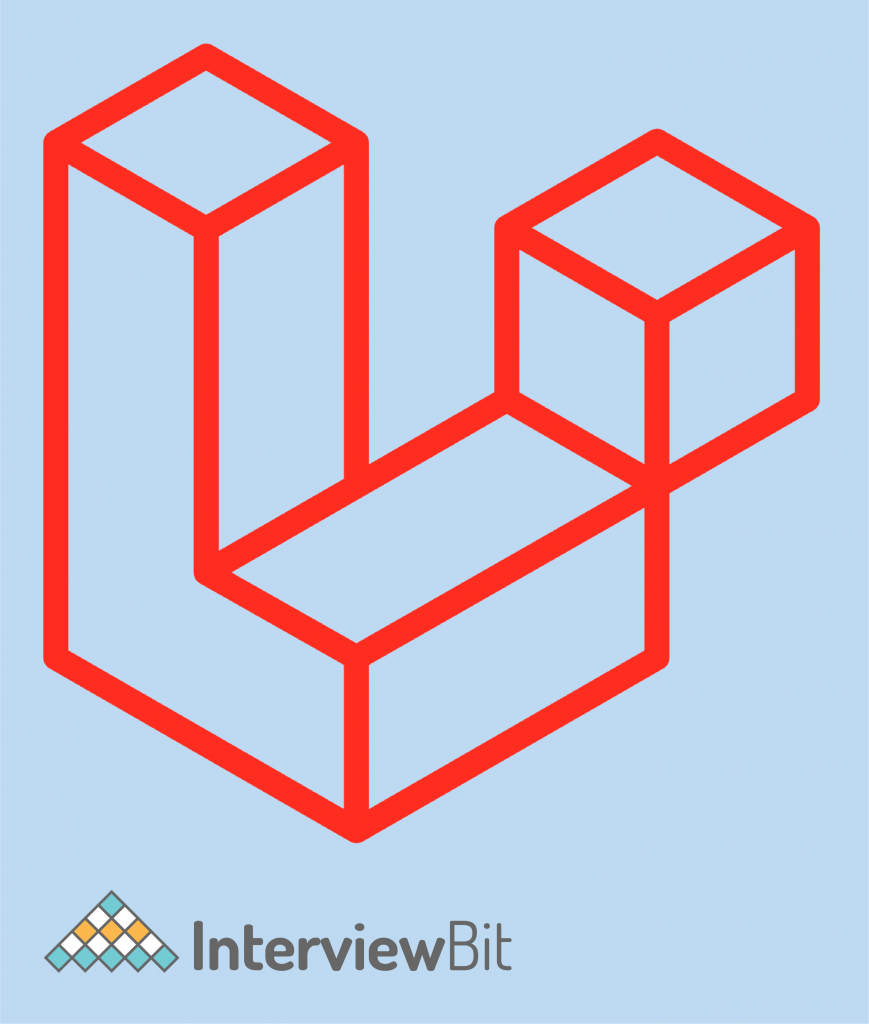
Released on: June 2011
Developers primarily use Laravel to design custom web apps utilizing PHP. This web framework deals with several things that are troubling to build yourself, like templating HTML, authentication and routing. It is fully server-side, because of working on PHP, and concentrates massively on data manipulation and sticking to a Model-View-Controller design. A framework like React might prioritise user interaction and shiny features, but Laravel simply offers a solid foundation for you to build on and does it accurately.
One of the best PHP web frameworks, Laravel gives impressive database tools such as ORM (Object Relational Mapper) called Eloquent, and built-in tools for setting up database migrations and seeders. With the command-line tool Artisan, programmers can bootstrap the latest models, controllers, and other application units, which speed up the application development. Laravel is packed with the Blade templating engine, which is a lightweight, powerful, and pre-installed template engine that assists programmers to make the developmental process smooth with its magnificent layouts. The Blade template engine supports data display and extending layouts without upsetting the application’s operation and pace. It helps you design new and fascinating layouts utilising the feature of content seeding. Besides this, it gives its structure to set up and view a file that consists of conditional statements and loops. You can also make use of the master template to build a simple layout that other files can extend.
Pros
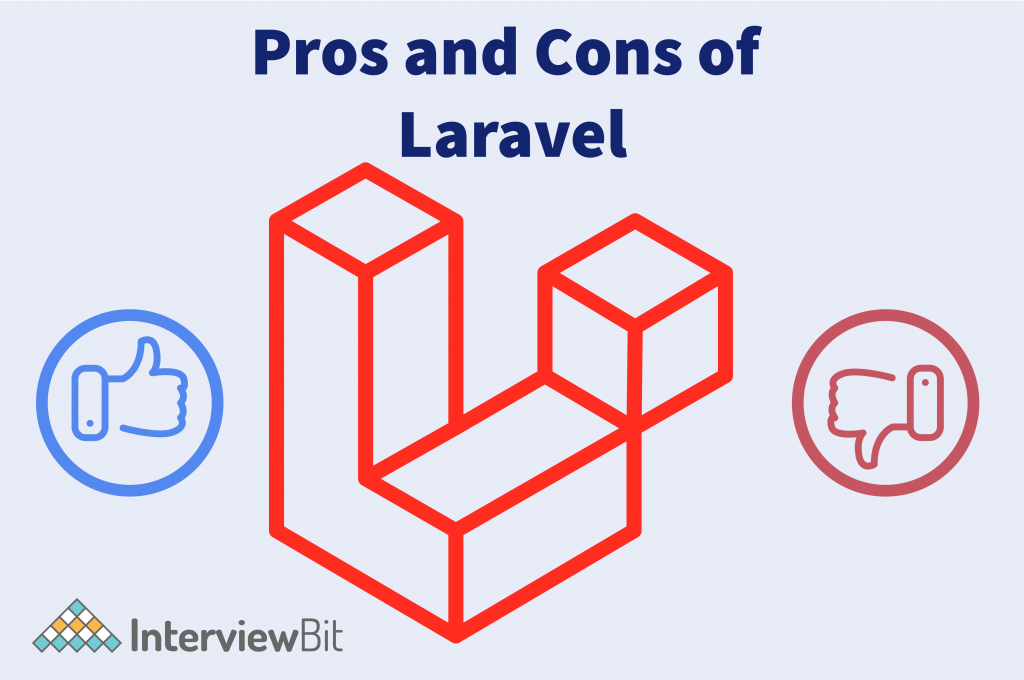
- MVC architecture: MVC architecture makes Laravel the best PHP environment for web app development. It provides improved performance, detail-oriented documentation, and many built-in features more than other PHP environments.
- Easy, built-in access: A robust framework, Laravel assists you in incorporating authentication and access control easily. This makes logging in smoother than ever before as this single order, which also means security will not get lost along the way, manages all the steps either since they’re always present together in Laravel.
- Comprehensive documentation: Laravel’s comprehensive documentation makes it very simple and user-friendly for programmers, regardless of their technical knowledge or experience level. Everything from starter kits to deployment, installation to configuration, is a wealth of data for anyone keen to comprehend how to make use of Laravel.
- Security: For most businesses, security is the number one concern. With Laravel, improved security features are simple to configure on all websites to increase security and safeguard sites from hackers and cybercriminals. Laravel adopts a Bcrypt hashing algorithm, which implies it saves no passwords in the database. Compared to other PHP frameworks, Laravel has strong user authentication and restrained access features that are simple to make. This lets you keep your and your’s customer’s data safe.
- Better website performance: Unlike other frameworks present, Laravel backs caching for your website out-of-the-box, which is remarkable for enhancing your site speed. To further boost the performance of your website, Laravel implements other speed optimisation means, like database indexing, and memory use reduction is really easy to incorporate. This makes Laravel a superb choice for your organisation if SEO friendliness and site speed are some of your concerns.
- Perfect for Traffic-Handling: As your business expands, so will the number of traffic to your site. A website developed in Laravel can manage website requests much faster than other frameworks. It implements a different message queue system, which implies you can put off specific website tasks like sending emails until a later time. By controlling time-consuming tasks, your website can handle tasks quicker, which not only keeps your website’s server healthy but can also cut down your hosting costs in the long run.
Cons
- Not sufficient built-in support: One prominent drawback of Laravel is an asymmetrical progression from an older version to the latest one, which only intensifies the pain of handling the glaring shortcoming of built-in support. So, met with any significant concern, programmers have to scamper for aid via the framework’s documentation.
- Difficult to master: Laravel is quite difficult to master. It has so many factors that don’t act like you would hope for them too. They work in various ways based on how you have structured your code around their initial design intent, which makes mastering this system all the more interesting for those who are looking for something challenging.
- Constant upgrades can be overbearing: The advantages that Laravel’s periodic updates bring can prove to be an enormous challenge, especially when one is working in the middle of a project and one of its features becomes meaningless if they do not complete the latest update. This proves to be costly and time-consuming too, stretching your project timeframe.
Famous companies that make use of Laravel:
- World Walking,
- Koel, Barchart,
- Invoice Ninja,
- Asgard CMS.
5. Express.js
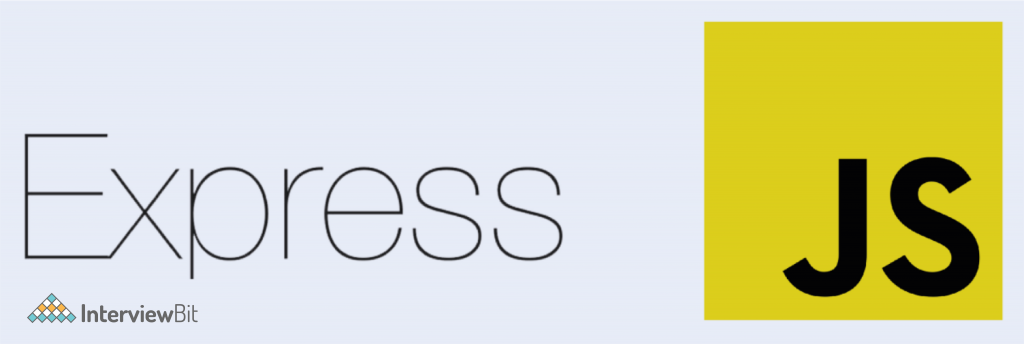
Released on: 16th November 2010
The most popular Node web framework, Express, is the underlying library for several other popular Node web frameworks. It provides mechanisms to:
- Draft handlers for requests with different HTTP verbs at different URL paths (routes).
- Confirm with “view” rendering engines to render responses by adding data into templates.
- Set popular web application settings, such as the port to utilize for connecting, and the position of templates that are implemented for rendering the response.
- Insert additional request processing “middleware” at any place within the request handling pipeline.
Being fairly minimalist, programmers have built compatible middleware packages to focus on almost any web development problem. There are libraries to act with user logins, sessions, cookies, POST data, URL parameters, security headers, etc. You can look for a list of middleware packages controlled by the Express team at Express Middleware, alongside a list of a few of the popular 3rd party packages.
Pros
- Less Maintenance Cost: Express is a full-stack JS framework, due to which you don’t need to hire many developers for handling the front-end and back-end of a web app.
- Rapid development: With Express you can make use of JavaScript for both back-end and front-end development, which implies it’s quicker than conventional approaches that would need different people in different roles. There are no unwanted delays since every programmer handles what they’re most familiar with – making the entire process much easier.
- Backed by Google v8 engine: Express.JS is backed by the Google V8 engine. With its help, you could get higher performance with no lag or flaw in the processing.
- Community support: If you come across any problem while functioning with Express.JS you can readily take aid from the extremely supportive community Express has.
- Supports Caching: Express.js is equipped with the caching feature, and the benefit of the catch is that you would not require to re-execute the codes repeatedly. It will support web pages to load quicker than ever.
Cons
There are not many cons for Express, other than a mere mention of error messages being hard to locate and some flying and unfound reference to security issues, a search that bore no fruit.
Famous companies that make use of the Express:
- Stack,
- Accenture,
- Wix,
- Fox Sports,
- PayPal,Uber
- IBM.
6. CakePHP
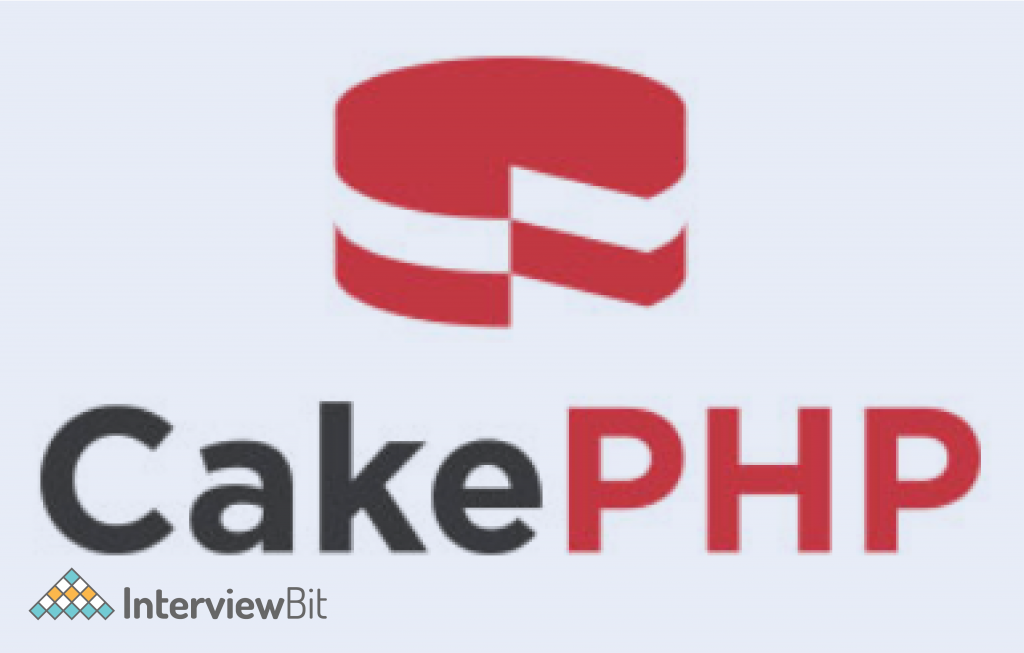
Released on: April 2005
A free, open-source PHP development framework for PHP, CakePHP is based on an MVC-like architecture. The framework is powerful, but also easy to comprehend. The CakePHP framework displays a foundational structure for developers to build web applications. Utilising it, they facilitate the programmers to function in a structured and rapid manner, without compromising flexibility. A major benefit of CakePHP is an effective developer team and a dynamic community of users. The CakePHP framework displays a powerful base for dealing with every facet of a web application, ranging from the user’s primary request to the finished rendering of a web page. Adhering to the principles of MVC (model, view, controller), the framework authorizes you to customise easily and extend most application features. It also gives a key organisational structure, from filenames to database table names, making sure your entire application is consistent.
The most significant reason for utilising the CakePHP framework is the absence of the need to understand and use complicated programming arrays, commands, and functions by developers. We can say that to incorporate web applications, you just require the general structure of the database and the establishment of models, controllers, and pages all based on the questions demanded by the user, efficiently and without interference.
Pros
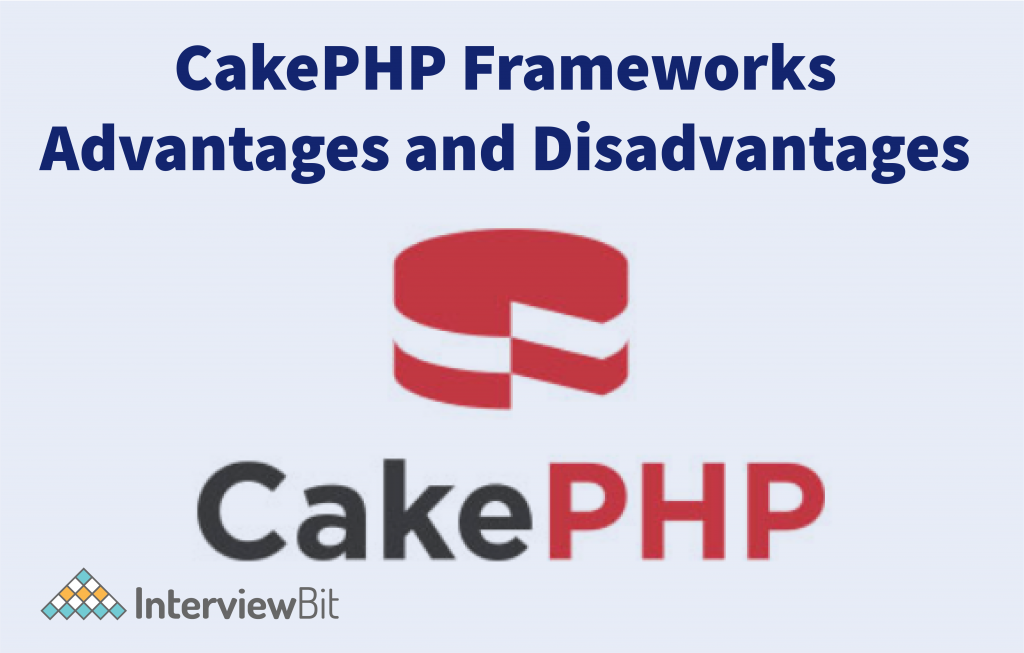
Many developers find it daunting to work with standard PHP classes. While dealing with different classes, CakePHP allows programmers to directly access Core and App directories. So it becomes easier for them to define the functions of each class in a much simpler way.
- Code reusability: Being an object-oriented framework, CakePHP lets programmers design reusable code components. The libraries possess plugins, helpers, and behaviours that can be used for other projects rather than developing your version each time someone asks for it. They can rapidly create new PHP applications by reusing the existing code for different projects.
- Built-in authentication: CakePHP is the best choice for developing secure, safe, and effective applications. It offers built-in security tools that assist you in avoiding typical security problems such as SQL injection CSRF attacks, and XSS attacks, which makes it more simple to utilise than other frameworks.
- Open Source platform: The foremost rule of making a commodity famous is that it should be readily available. Cake PHP makes sure that it continues to be an open-source web development program. Having no licensed or reappearing fees and no probability of even spending money on web development. Cake PHP gives web programmers the freedom to build a fascinating website.
- Easily extendable: Cake PHP provides you to design reusable code parts. You can reuse the codes for more than a single project. Rather than expanding its own libraries, functionality can be given to plug-ins, components, helpers, and behaviours. The cake forge site possesses plugin helpers and components.
Cons
- Mediocre documentation support: CakePHP’s documentation is certainly not as comprehensive and impressive as the other frameworks in its class.
- Routing challenge: Routing in CakePHP is a serious concern, since one cannot revise URLs without updating default routes, but decides for one-way routing. This makes it an inconvenient option as compared to other frameworks that provide for more flexibility.
- Migration issues: Concerns related to shifting from version 2.x to 3.x have been highlighted by several programmers, who showed that 3.x won’t support different backwards-compatible changes. This makes it unreasonable to transform their existing app to the updated version. Of course, we can directly use the new features on 3.x to develop apps.
Famous companies that make use of the CakePHP:
- Followmytv,
- Mapme,
- Education Unlimited
Benefits of Backend Frameworks
Now that you have learned about the top backend frameworks, let’s quickly talk about the advantages of utilizing frameworks for mobile app/web backend development.
- Timesaving – Certainly, when programmers can build app functionality from pre-written atomic features, the process of development takes much limited time. This results in lesser bugs, which cut down the cycle of development and enhances the quality of the resulting product.
- Scalability – All features of the framework are pre-tested and can be scaled instantly and efficiently. This makes it simpler to build an app that focuses on demand spikes appropriately and scales components up and down as required.
- Robustness – With frameworks, you can make use of a unique code and design on it. This facilitates your programmers to offer powerful features with simple and simplified structures without the need to reinvent the wheel.
- Security – Most frameworks are open-source, and there’s a vast and strong community behind every one of them so that someone addresses security issues adequately. World-known apps and websites such as Shopify, Coursera, Instagram, Pinterest, and Reddit are designed utilizing Laravel, Node.js, ASP.NET, Django, and Ruby on Rails. These determine that people take security seriously.
- Integrations – Developing a standalone application is not as workable as developing a prevailing one with different functions. Backend development frameworks guarantee that utilising GraphQL or RESTful API integrations is much easier. This way, you can make your new app an indispensable part of a flourishing software ecosystem and increase user experience greatly.
Conclusions
All of the above-listed frameworks have the potential to stand out in the years to come since they have amazing features. This article strives to throw light on the most promising and popular frameworks for programmers to focus on. New, easier, and more effective forms of development are appearing each day. Thus, the recycling of professionals is crucial to keep at par with the backend frameworks trends.
Among these, ASP.NET and Django are frameworks specifically devised for server-side rendering, whereas Sping is utilized for client-side rendering, but it is also used for backend. These are just a few of the frameworks that will lead the market in 2022 along with other well-regarded frameworks including React, Vue, and Angular.
FAQs
Q.1: Which Backend framework is mostly used?
Ans: The backend frameworks that are mostly used are Ruby, Express, Django, and Laravel.
Q.2: Which Web framework is fastest?
Ans: Django is the fastest network.
Q.3: Is Python used for frontend or backend?
Ans: Yes, Python, Ruby, and PHP are among the three most popular Back End languages.
Q.4: What is an MVC Framework?
Ans: A software design pattern, a Model-View-Controller splits an application into three logically interconnected components such as the model, the controller and the view. It is used to organise the code into simple organised components
Q.5: Explain the Architectural style used to create the Web API.
Ans: The architectural style for designing web API are:
- For client-server communication, HTTP
- XML / JSON as a formatting language
- Easy URI as the address for the services
- Stateless communication


